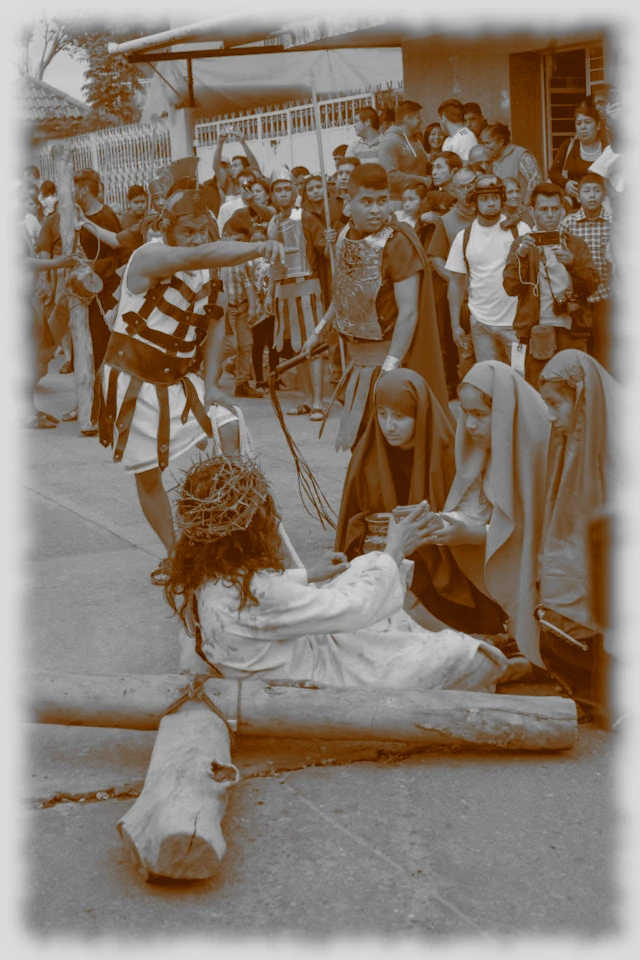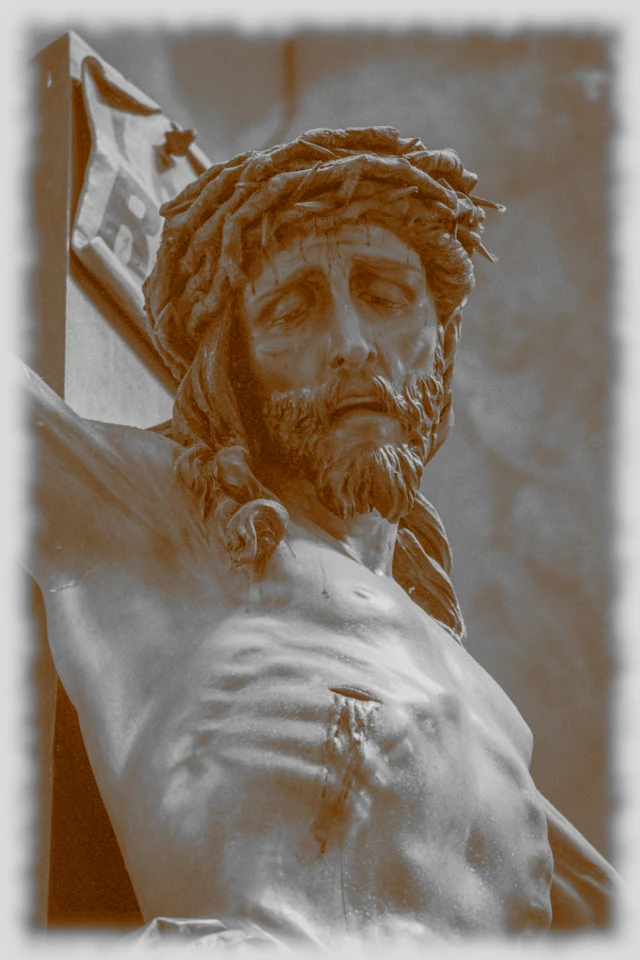- Rosary
- Sorrowful Mysteries
Sorrowful Mysteries of the Rosary
Sorrowful Mysteries of the Rosary
The Sorrowful Mysteries of the Rosary invite us to journey into the profound depths of Christ’s suffering and ultimate sacrifice. Through the lens of five events—His Agony in the Garden, the Scourging at the Pillar, the Crowning with Thorns, the Carrying of the Cross, and the Crucifixion—we are called to meditate on the immense love and humility that He demonstrated for humanity. These mysteries are not merely moments in history but living reflections of virtues that we are challenged to embody, such as perseverance, forgiveness, and self-sacrificing love.
As you delve into the Sorrowful Mysteries, you are invited to connect deeply with the heart of Christ and embrace their meaning in your own life. May these meditations guide you on your spiritual journey, offering strength in trials, clarity in struggles, and the grace to grow ever closer to God. Let this page be a place of quiet reflection and renewal, where the virtues of Christ inspire and transform your soul.
 |
 |
 |
"Unlock Friday’s Divine Spark – Begin Your Daily Rosary Journey Today!"
Begin the Sorrowful Mysteries Pilgrimage
The Agony in the Garden
In the stillness of Gethsemane, Jesus fully embraced the weight of obedience, surrendering to the Father's will amidst overwhelming anguish.
The Scourging at the Pillar
This reveals the depth of Christ's sacrifice as He endured brutal suffering for the sake of humanity.
The Crowning of Thorns
This moment calls us to reflect on the virtue of courage, inspiring us to remain steadfast in faith.
The Carrying of the Cross
The Cross reveals unwavering endurance as He bore the weight of humanity's sins on the road to Calvary.
The Crucifixion
Encounter narratives that bring to life the darkness that fell over the land, the earthquake that shook creation.
Sorrowful Mysteries & Stations of the Cross Connection
Paired with Station 1: Jesus is Condemned to Death
In Gethsemane, Jesus wrestles with fear and ultimately accepts the Father's will with "not my will, but yours." This inner surrender directly leads to His willingness to accept Pilate's death sentence without protest. Both moments show Jesus choosing obedience over self-preservation.
The Connection: The private agony becomes public acceptance. What Jesus decided in the garden—to trust God's plan despite the cost—He lives out before the world when condemned. The internal "yes" to suffering becomes the external "yes" to the cross.
In your own life: When facing a difficult decision that you know is right but painful, remember this connection. Your private moments of prayer and surrender prepare you for public moments of standing firm. The courage you find in solitude with God becomes the strength you show the world. Sometimes the hardest part isn't the actual trial—it's accepting that it's necessary.
Paired with Station 3: Jesus Falls the First Time
The brutal scourging weakens Jesus's body to the breaking point. Every lash tears His flesh and drains His strength. When He later takes up the cross, this physical trauma causes His first fall—the inevitable result of having endured such savage punishment.
The Connection: Hidden suffering leads to visible weakness. The private torture at the pillar becomes the public stumbling on the road to Calvary. Our wounds, even when healed, can still affect our ability to carry our burdens.
In your own life: Past traumas—whether physical, emotional, or spiritual—can make current challenges feel overwhelming. When you "fall" under life's pressures, it may be because of wounds others can't see. This isn't failure; it's being human. Just as Christ's falling didn't mean He gave up, your struggles don't disqualify you from your mission. Sometimes acknowledging our limitations becomes a source of unexpected strength and compassion.
Paired with Station 9: Jesus Falls the Third Time
The crown of thorns pierces Jesus's scalp while soldiers mock Him as king. Hours later, near Calvary's summit, He falls for the third time—not from physical weakness alone, but from the accumulated weight of mockery, rejection, and spiritual anguish. Each thorn's pain has compounded over time.
The Connection: Repeated humiliation creates cumulative exhaustion. The mockery that began with the crown continues through the journey, wearing down not just the body but the spirit. The third fall happens so close to the destination because the emotional wounds run deepest.
In your own life: Sometimes the hardest moments come just before breakthrough. When criticism, rejection, or ridicule has worn you down over time, you might find yourself "falling" just when success seems within reach. This pattern isn't coincidence—it's the final test of perseverance. Like Jesus falling so close to Calvary, your greatest struggles often come right before your greatest victories. The crown of thorns always precedes the crown of glory.
Paired with Station 5: Simon of Cyrene Helps Jesus Carry His Cross
Jesus begins carrying His cross alone, but His weakened state requires help. Simon is compelled to assist, transforming from reluctant bystander to essential participant in salvation history. The Mystery and Station show us that accepting help isn't weakness—it's wisdom and even necessity.
The Connection: Solo suffering becomes shared mission. What begins as individual burden becomes communal witness. Simon's forced assistance teaches us that God often uses unexpected people to help carry our crosses, and sometimes we're called to be Simon for others.
In your own life: Pride often makes us want to handle everything alone, but this pairing reminds us that accepting help is part of God's plan. Whether you're the one needing assistance or being called to help another, both roles are sacred. Sometimes your greatest ministry happens when you're too weak to minister alone. And sometimes helping someone else carry their burden becomes your own path to holiness. We're not meant to walk the Christian journey in isolation.
→ Reflect on Station 5: Simon of Cyrene helps Jesus carry His cross.
Paired with Station 12: Jesus Dies on the Cross
The Mystery of the Crucifixion and the Station of Christ's death are the same event viewed from different angles—one focuses on the act of sacrificial love, the other on the moment of completion. "It is finished" doesn't mean "it is over," but "it is accomplished." The greatest love is fulfilled in the ultimate gift of self.
The Connection: Perfect love requires perfect sacrifice. The crucifixion process and the dying moment unite to show us that true love isn't just a feeling or intention—it demands everything, even life itself. Death becomes victory through love.
In your own life: The deepest relationships require the death of selfishness. Whether in marriage, parenthood, friendship, or service, real love demands that we "die" to our own preferences, comfort, and control. This isn't loss—it's the path to abundant life. When you choose another's good over your own convenience, you participate in Christ's crucifixion. When you see that choice bring joy or healing to others, you witness resurrection. The pattern of dying to self and rising in love repeats throughout the Christian life.
Deepen our understanding with the Sorrowful Mysteries
Deepening the human experience of understanding the Sorrowful Mysteries of the Rosary involves immersing oneself in the profound suffering and unyielding love embodied by these mysteries.
Each Sorrowful Mystery reflects pivotal moments in Jesus' Passion, from His agony in the garden to His crucifixion and death.
By meditating on these events, we are invited to enter into a deeper empathy for Christ's suffering and to recognize the immense love that motivated His sacrifice. This contemplation fosters a greater sense of humility and gratitude, encouraging a personal connection to the divine.
It helps individuals to not only reflect on their own hardships but also to find strength and solace in the shared experience of suffering and redemption. Through this meditative practice, we can develop a more profound spiritual resilience and a compassionate heart, ultimately transforming their approach to life's challenges and their understanding of divine love
